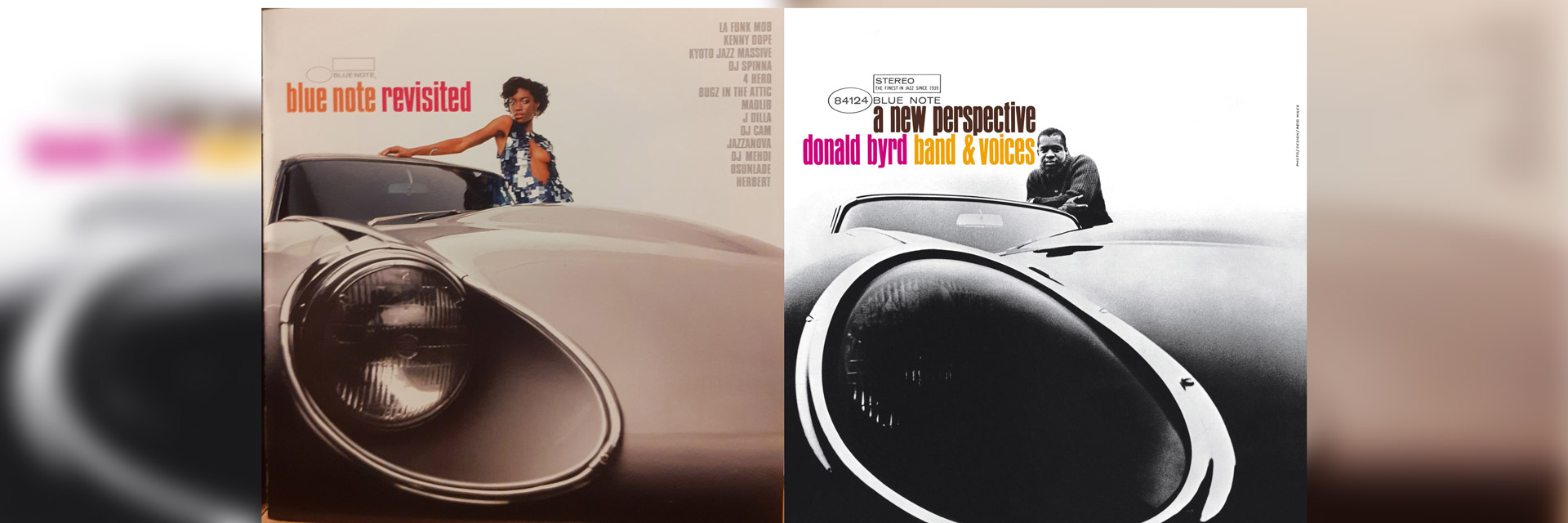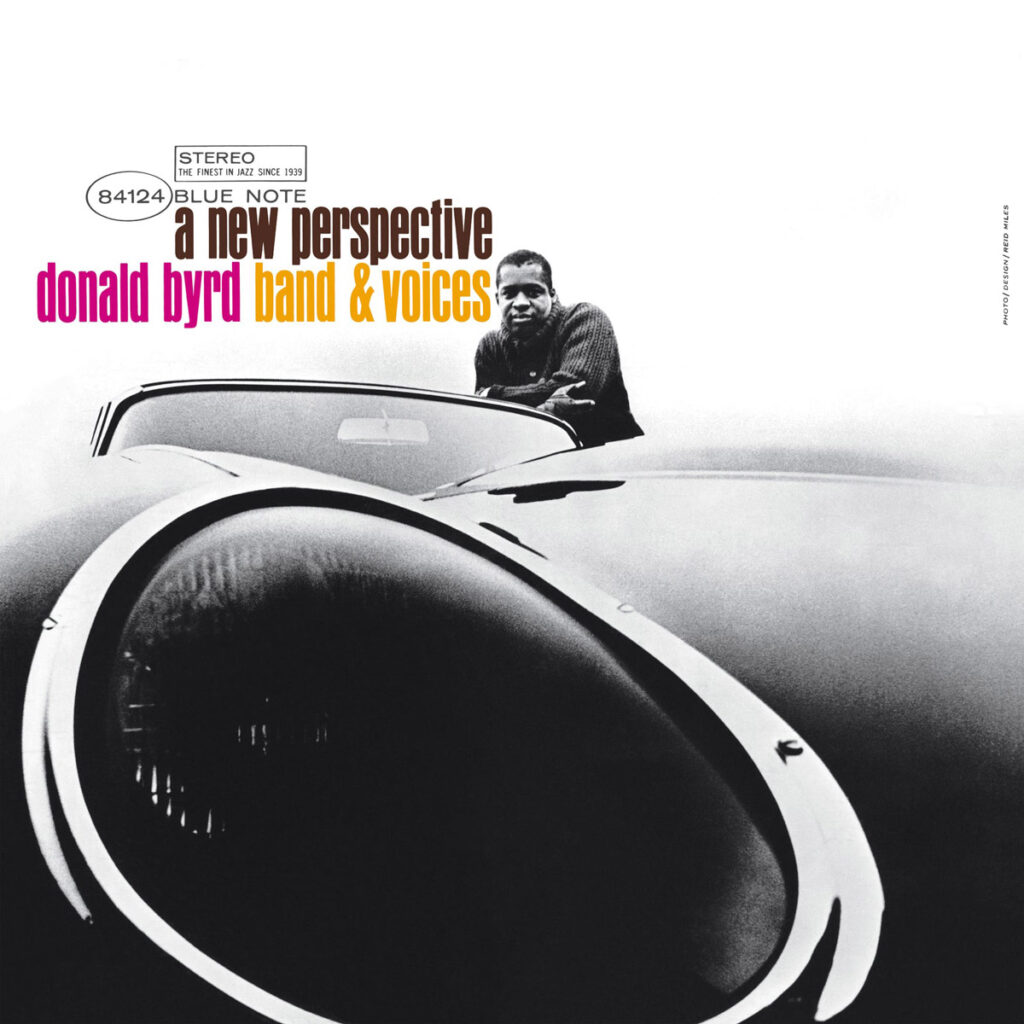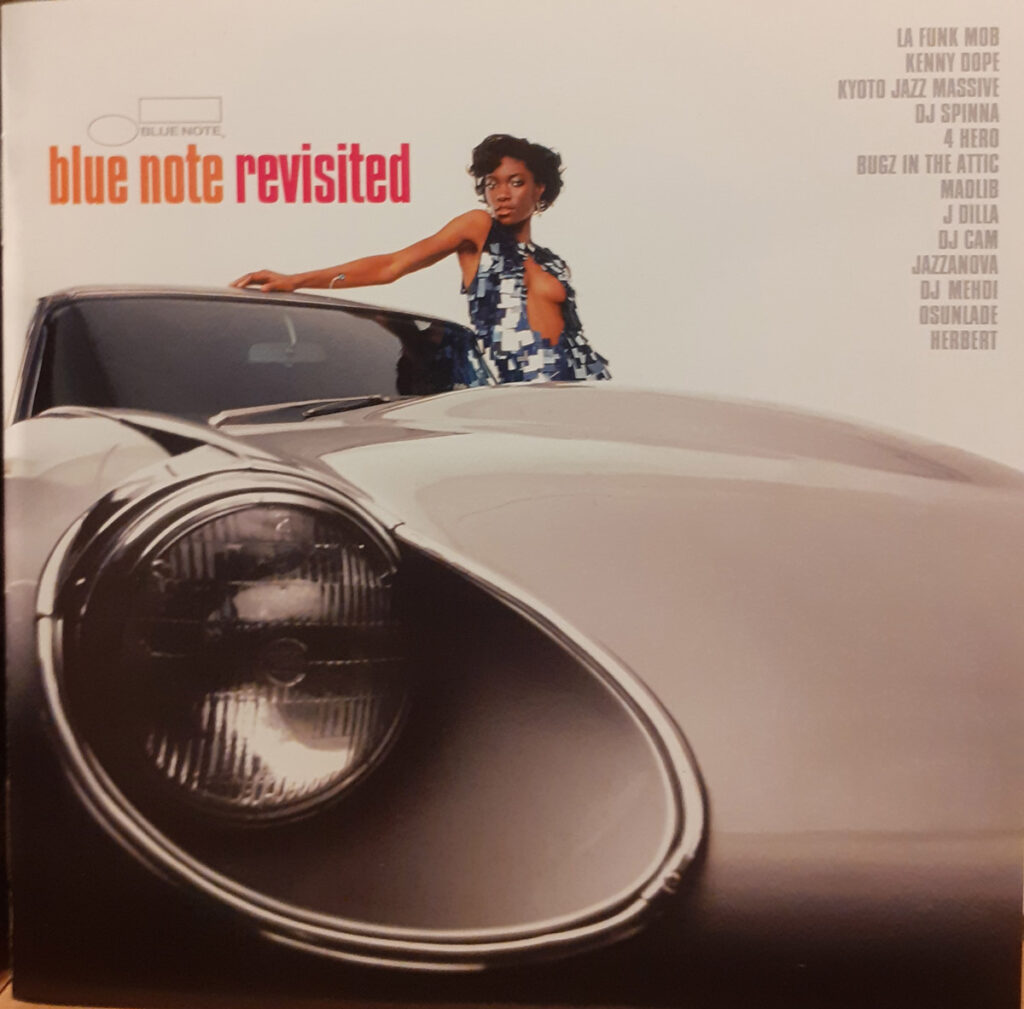It was 1955 when Donald Byrd’s career really took off.
The young trumpeter joined Art Blakey’s Jazz Messengers and also made his own debut album. Over the next five years, he would release around 20 (!) more records as bandleader or co-bandleader and about twice as many sideman albums. Donald Byrd was one of the three or four best trumpeters of hard bop, a style that was sometimes called “pulpit jazz” or “gospel jazz” because of its gospel and spiritual influences. This connection to the black church was always important to Donald Byrd. He occasionally wrote pieces with titles such as “Amen” or “Pentacostal Feel.” His father was a Methodist preacher. Finally, the album A New Perspective was intended to deepen the connection to religion. Here, Byrd supplemented his top-class hard bop sextet with a small mixed gospel choir.
The record, released in early 1964, sold reasonably well. In 2017, Pitchfork magazine ranked it among the 200 best albums of the entire 1960s, across all genres. Byrd dedicated the cheerful “Elijah” to his father, the preacher. “Beast Of Burden” is a tribute to the biblical mule – in a patient, sleepy slow blues feeling. “Black Disciple” is a salute to the supposedly dark-skinned one of the three wise men. The remaining two pieces were written by Duke Pearson, who also wrote all the choir arrangements. “Cristo Redentor” alludes to the statue of Christ above Rio de Janeiro, while “Chant” has bluesy undertones. However, Byrd refrained from using religious lyrics – the small choir is content with syllabic singing (dududuh, dadadah). This often resembles the brass riffs of a big band.
It was important to Byrd to emphasize that the record was not meant as a joke. “I’m serious about this album,” he said. “We approach religious tradition with respect and great pleasure.” In fact, the vocal arrangements seem so honest and down-to-earth that there is never any suspicion that the voices are aimed at commercial streamlining – quite unlike the front cover, for example. The idea of illustrating Byrd’s gospel-like “new perspective” with the design of a sports car is astonishing, to say the least.
It’s important to note that both Donald Byrd and Reid Miles, the designer and photographer of the album cover, were absolute car nuts. Byrd can be seen with a fast car on about half a dozen of his album covers. Photos of fast cars also appeared on the Blue Note album covers of some of his colleagues – Hank Mobley, Stanley Turrentine, Jimmy Smith, The Three Sounds. Incidentally, the Jaguar E-Type on the cover of A New Perspective belonged to a friend of Donald Byrd’s. He himself drove a Shelby Cobra at the time.
Black music and flaunting luxury: naturally, this would appeal to hip-hop artists. Rapper Tone Lōc imitated Byrd’s album cover as early as 1989 for his debut album Lōc-ed After Dark – exactly 25 years after A New Perspective. At that point, it was impossible to predict the significant role that jazz samples and jazz remixes would soon play in the hip-hop and house scene. Donald Byrd in particular became an important link between jazz and hip-hop. His successful album Black Byrd (1973) was considered a precursor to the newer black music, and he himself was personally involved in hip-hop projects, such as Guru’s Jazzmatazz formation. Consequently, two of his pieces are also featured on the compilation Blue Note Revisited, which was dedicated to precisely this fashionable hip-hopization of jazz. DJ Spinna and DJ Cam have spruced up two pieces by Byrd (from his most commercial phase in the early 1970s) with electronic, instrumental, and vocal ingredients. Something similar happens here with selected historical Blue Note recordings by Grant Green, Bobby Hutcherson, Brother Jack McDuff, Wayne Shorter, and Horace Silver. The remixers included only the most renowned names of the day: 4 Hero, Bugz In The Attic, Madlib, J Dilla, Kyoto Jazz Massive, Jazzanova, Matthew Herbert, and others.
In 2004, the Blue Note record company celebrated this “reworking” of its archival treasures by “modern DJ culture” – calling it “reinterpreting, reconstructing, recontextualizing.” Jazz critics, on the other hand, were rather skeptical and doubted that such remixing had any musical relevance. But at least some old jazz grooves have been interpreted in an original way, and some old soundscapes have been humorously alienated. However, little remains of the jazz. Today, the results seem like slightly dusty bistro background music – or, as one critic put it, “a mixture of Stevie Wonder and Steely Dan.” One of the most successful updates is undoubtedly the album cover of Blue Note Revisited. It can be understood as both a tribute to jazz musician Donald Byrd and rapper Tone Lōc. Once again, it features a Jaguar E-Type, but this time adorned by fashion model Tia Holland. The beautiful luxury car can be seen in six photos in the artwork, while the beautiful Tia appears in four.
PS: Blue Note recently conducted an experiment. They wanted to find out what the actual connection between Donald Byrd’s gospel hard bop and a Jaguar E-Type could be. An employee drove the Jaguar (albeit only in a video game) while listening to the album. The test report on the website is detailed but inconclusive: “I accelerate to 135 miles per hour in fourth gear before spinning out of the bend.”
Find Donald Byrd – A New Perspective at Sieveking Sound
Find Blue Note Revisited by various artists on Discogs



